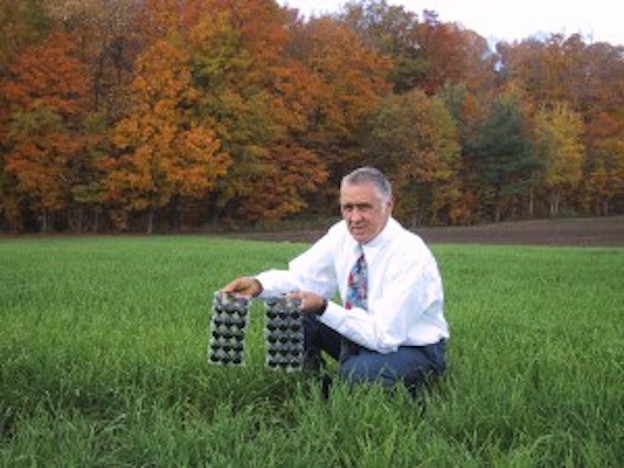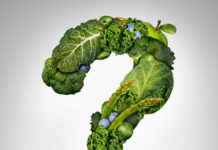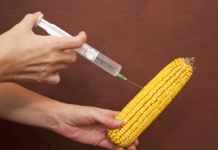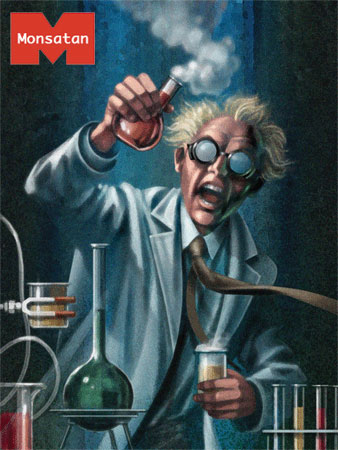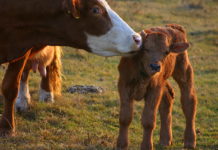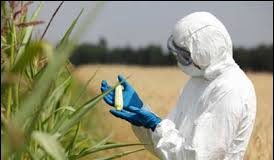 To find the truth you need to study the facts for yourself and be empowered in your own healthy choices. Genetic Roulette” by Jeffrey M. Smith provides a more detailed analysis of the documented health risks of GMOs. If you like his book “Seeds of Deception,” you’ll be blown away by this one. Smith gives you everything you need to shatter the biotech industry’s claim that Monsanto GMO foods are actually safe!m Here are a whole range of facts that they don’t want you to know.
To find the truth you need to study the facts for yourself and be empowered in your own healthy choices. Genetic Roulette” by Jeffrey M. Smith provides a more detailed analysis of the documented health risks of GMOs. If you like his book “Seeds of Deception,” you’ll be blown away by this one. Smith gives you everything you need to shatter the biotech industry’s claim that Monsanto GMO foods are actually safe!m Here are a whole range of facts that they don’t want you to know.
- Evaluation of gene insertion sites have shown relocations of up to 40,000 DNA base pairs, mixing together of foreign and host DNA, large scale deletions of more than a dozen genes and multiple random insertions of foreign DNA fragments.
- During insertion, foreign genes may become truncated, rearranged or interspersed with extraneous pieces of DNA. The proteins produced by the distorted foreign gene may be misfolded or have added molecules, so they may operate differently and be harmful in unpredictable ways.
- One study using a micro-array gene chip found that 5% of the host’s genes changed their levels of expression after a single gene was inserted.The “promoter” used in nearly all GM crops permanently turns on the foreign gene at high output. Scientists had thought the promoter would only turn on the foreign gene, but, in fact, it can accidentally turn on other natural plant genes that may overproduce an allergen, toxin, carcinogen or anti-nutrient, or regulators that block other genes.
- When certain viruses infect an organism, they splice themselves into the host’s DNA. If the GMO promoter is inserted in the vicinity of a dormant virus, it might switch it on, resulting in virus activation.
- In GMO Roundup Ready soybeans, the “stop signal” placed at the end of the gene cassette is dysfunctional, so longer than intended RNA proteins are produced, which are further rearranged into four non-intended variants, any one of which might be harmful.
- DNA changes in GMO plants can alter the amounts of the chemicals the plant naturally produces, increasing its output of toxins or decreasing the amount of protective phytonutrients produced. For example, GMO soybeans produce less cancer-fighting isoflavones.
- GMO proteins in soybeans, corn and papaya are similar to known allergens and may cause allergies.
- Transgenes can survive digestion and transfer to gut bacteria or move into blood and organs, including passing through the placenta into the fetus and through the blood-brain barrier. The only human feeding trial ever published confirmed that genetic material from Roundup Ready soybeans transferred into the gut bacteria in three of seven human volunteers. Once in the human gut bacteria, the transferred portion of the transgene produced herbicide-resistant protein.
- If the antibiotic-resistant genes that have been inserted into most GMO foods on the market were to transfer to pathogenic bacteria in the gut, antibiotic-resistant diseases could develop. If the transgene for the Bt pesticide were to transfer to our gut bacteria, we could become living pesticide factories.
- Rats fed Monsanto’s Mon 863 Bt corn for 90 days showed significant changes in their blood cells, livers and kidneys.
- Rats were fed the GM FlavrSavr tomato for 28 days. Seven of 20 rats developed stomach lesions (bleeding stomachs); another 7 of 40 died within two weeks.
- About 25% of the sheep in herds grazing continuously on Bt cotton plants in India after the cotton harvest died within a week, according to reports from 4 villages. Post mortem studies suggested a toxic reaction.
- Twelve dairy cows died on a farm in Hesse Germany, after being fed a diet with significant amounts of the GM corn variety, Bt 176. Other cows in the herd developed a mysterious illness and had to be killed. Syngenta, the producers of Bt 176, compensated the farmer for part of his losses, but despite the farmer’s demands and public protests, no detailed autopsy reports were made available.
- More than 20 farmers in North America have reported that pigs fed GMO corn had low conception rates, false pregnancies or gave birth to bags of water. Both male and female pigs became sterile.
- In mice fed GMO soy, production of alpha-amylase, an enzyme responsible for digesting starch, dropped by as much as 77%.
- In male mice fed Roundup Ready soybeans, the structure and gene expression pattern of testicular cells changed significantly.
- Female rats were fed Roundup Ready soy starting before conception and continuing through weaning. 55.6% of the offspring died within three weeks compared to 9% of non-GM soy controls. In another study, after a lab began feeding rats a commercial diet containing GM soy, offspring mortality reached 55.3%. When offspring from the GM-fed rats were mated together, they were unable to conceive.
Monsanto GMO Foods Won’t Solve Our Food Crisis.
A 2008 World Bank report concluded that increased biofuel production is the major cause of the increase in food prices. GMO behemoth Monsanto has been at the heart of the lobbying for biofuels (crops grown for fuel rather than food) — while profiting enormously from the resulting food crisis and using it as a PR opportunity to promote GMO foods!
Monsanto GMO Foods Don’t Really Increase Yields.
Despite the promises, GMOs have not increased the yield potential of any commercial crops. In fact, studies show that the most widely grown GMO crop, GMO soy, has suffered reduced yields.[
“Let’s be clear. As of this year [2008], there are no commercialized GM crops that inherently increase yield. Similarly, there are no GM crops on the market that were engineered to resist drought, reduce fertilizer pollution or save soil. Not one.” — Dr Doug Gurian-Sherman, former biotech specialist for the US Environmental Protection Agency and former advisor on GM to the US Food and Drug Administration
Monsanto GMO Foods Increase Use of Pesticides.
Official data shows that in the US, GMO crops have produced an overall average increase, not decrease, in pesticide use compared to conventional crops.
“The promise was that you could use less chemicals and produce a greater yield. But let me tell you none of this is true.” — Bill Christison, President of the US National Family Farm Coalition
There are Better Ways to Feed the Planet.
A major recent UN/World Bank-sponsored report compiled by 400 scientists, and endorsed by 58 countries, concluded that GMO crops have little to offer global agriculture and the challenges of poverty, hunger, and climate change, because better alternatives are available.
Integrated Pest Management and other innovative low-input or organic methods of controlling pests and boosting yields have proven highly effective, particularly in the developing world. Other plant breeding technologies, such as Marker Assisted Selection (non-GM genetic mapping), are widely expected to boost global agricultural productivity more effectively and safely than GMOs.
“The quiet revolution is happening in gene mapping, helping us understand crops better. That is up and running and could have a far greater impact on agriculture [than GM].” — Prof John Snape, head of the department of crop genetics, John Innes Centre
Monsanto GMO Foods Have Never Been Truly Proven to be Safe!
Genetic modification is a crude and imprecise way of incorporating foreign genetic material (e.g. from viruses, bacteria) into crops, with unpredictable consequences. The resulting GM foods have undergone little rigorous and no long-term safety testing, but animal feeding tests have shown worrying health effects. Only one study has been published on the direct effects on humans of eating a GM food. It found unexpected effects on gut bacteria, but was never followed up.
“We are confronted with the most powerful technology the world has ever known, and it is being rapidly deployed with almost no thought whatsoever to its consequences.” — Dr Suzanne Wuerthele, US Environmental Protection Agency (EPA) toxicologist
Hidden GMOs in Farm Animal Feed.
Meat, eggs and dairy products from animals raised on the millions of tons of GM feed imported into Europe do not have to be labelled. Studies have shown that if GM crops are fed to animals, GM material can appear in the resulting products. As GM foods have been shown to affect animals’ health, eating such “stealth GMOs” may affect the health of consumers.
No one is Tracking the Effect of Monsanto GMO Foods on Your Health..
It is claimed that Americans have eaten GMO foods for years with no ill effects. But these foods are NOT labeled in the US and no one has monitored the consequences. With other novel foods like trans fats, it has taken decades to realize that they have caused millions of premature deaths.
GMO & Non-GMO Cannot Co-Exist.
GMO contamination of conventional and organic food is increasing. An unapproved GMO rice that was grown for only one year in field trials was found to have extensively contaminated the US rice supply and seed stocks. In Canada, the organic oilseed rape industry has been destroyed by contamination from GM rape. In Spain, a study found that GMO maize “has caused a drastic reduction in organic cultivations of this grain and is making their coexistence practically impossible”.[
You Can Choose a GMO or Non-GMO World!
“If some people are allowed to choose to grow, sell and consume GM foods, soon nobody will be able to choose food, or a biosphere, free of GM. It’s a one way choice, like the introduction of rabbits or cane toads to Australia; once it’s made, it can’t be reversed.” — Roger Levett, specialist in sustainable development
We Can’t Trust Big Ag!
The big biotech firms pushing their GMO foods have a terrible history of toxic contamination and public deception. GMOs are attractive to them because they give them patents that allow monopoly-control over the world’s food supply. They have taken to harassing and intimidating farmers for the “crime” of saving patented seed or “stealing” patented genes — even if those genes got into the farmer’s fields through accidental contamination by wind or insects.
“Farmers are being sued for having GMOs on their property that they did not buy, do not want, will not use and cannot sell.” — Tom Wiley, North Dakota farmer
Need more, check out my web site and do a search for GMO:
https://RawFoodLife.com
Selected References:
Please note, most of the so-called “positive” research from major universities and such on GMOs is sponsored either directly or indirectly by Monsanto and friends. So a lot of what is available is from other excellent sources, though necessarily not found in the so-called “reliable sources” cited by pro-GMO authors. See: Academics who have become shills for corporate giants
“A Note on Rising Food Prices”, Donald Mitchell, World Bank report, 2008. http://image.guardian.co.uk/…/docum…/2008/07/10/Biofuels.PDF
“Hope for Africa lies in political reforms”, Daniel Howden, The Independent, 8 September 2008, http://www.independent.co.uk:80/…/daniel-howden-hope-for-af…
“GM: it’s safe, but it’s not a saviour”, Rob Lyons, Spiked Online, 7 July 2008, http://www.spiked-online.com/index.php?/site/article/5438/
“The adoption of bioengineered crops”, US Department of Agriculture Report, May 2002
“Glyphosate-resistant soyabean cultivar yields compared with sister lines”, Elmore, R.W. et al., Agronomy Journal, Vol. 93, No. 2, 2001, pp. 408–412
“Genetic engineering – a crop of hyperbole”, Doug Gurian-Sherman, The San Diego Union Tribune, 18 June 2008, http://www.signonsandiego.com/…/2008…/news_lz1e18gurian.html
“Genetically engineered crops and pesticide use in the United States: The first nine years”, Benbrook, C., BioTech InfoNet, Technical Paper No. 7, October 2004,العاب فلاش برق Pesticide Use in US Agriculture”, Center for Food Safety, May 2008, using data from US Department of Agriculture
“Family Farmers Warn of Dangers of Genetically Engineered Crops”, Bill Christison, In Motion magazine, 29 July 1998, Family Farmers Warn of Dangers of Genetically Engineered Crops by Bill Christison
“International Assessment of Agricultural Knowledge, Science and Technology for Development: Global Summary for Decision Makers (IAASTD)”, Beintema, N. et al., 2008,www.agassessment.org; accessed October 2008
See, for example: “International Assessment of Agricultural Knowledge, Science and Technology for Development: Global Summary for Decision Makers (IAASTD)”, Beintema, N. et al., 2008, www.agassessment.org
“Feeding the world?”, J. N. Pretty, SPLICE (magazine of the Genetics Forum), Vol. 4, Issue 6, August/September 1998; “Organic agriculture and food security in Africa”, United Nations report, 2008, http://www.unep-unctad.org/…/pu…/UNCTAD_DITC_TED_2007_15.pdf
“Marker-assisted selection: an approach for precision plant breeding in the twenty-first century”, Collard, B.C.Y. and D.J. Mackill, Phil. Trans. R. Soc. B, Vol. 363, 2008, pp. 557-572, 2008; “Breeding for abiotic stresses for sustainable agriculture”, Witcombe J.R. et al., Phil. Trans. R. Soc. B, 2008, Vol. 363, pp. 703-716
“Gene mapping the friendly face of GM technology”, Professor John Snape, Farmers Weekly, 1 March 2002, p. 54
Here is just a small selection of these papers: “Genetically modified soya leads to the decrease of weight and high mortality rate of rat pups of the first generation”, Ermakova I.V., EcosInform, Vol. 1, 2006, pp. 4-9; “Fine structural analysis of pancreatic acinar cell nuclei from mice fed on GM soybean”, Malatesta, M. et al., Eur. J. Histochem., Vol. 47, 2003, pp. 385–388;
“Ultrastructural morphometrical and immunocytochemical analyses of hepatocyte nuclei from mice fed on genetically modified soybean”, Malatesta, M. et al., Cell Struct Funct., Vol. 27, 2002, pp. 173-180; “Ultrastructural analysis of testes from mice fed on genetically modified soybean”, Vecchio L. et al., Eur. J. Histochem., Vol. 48, pp. 448-454, 2004; “A long-term study on female mice fed on a genetically modified soybean: effects on liver ageing”, Malatesta M. et al., Histochem Cell Biol., Vol. 130, 2008, pp. 967-977; “Effects of diets containing genetically modified potatoes expressing Galanthus nivalis lectin on rat small intestine”, Ewen S.W. and A. Pusztai, The Lancet, Vol. 354, 1999, pp. 1353–1354; “New Analysis of a Rat Feeding Study with a Genetically Modified Maize Reveals Signs of Hepatorenal Toxicity”, Séralini, G.-E. et al., Arch. Environ. Contam. Toxicol., Vol. 52, 2007, pp. 596-602.
“Assessing the survival of transgenic plant DNA in the human gastrointestinal tract”, Netherwood T. et al., Nature Biotechnology, Vol. 22, 2004, pp. 204–209.
“Detection of Transgenic and Endogenous Plant DNA in Digesta and Tissues of Sheep and Pigs Fed Roundup Ready Canola Meal”, Sharma, R. et al., J. Agric. Food Chem., Vol. 54, No. 5, 2006, pp. 1699–1709; “Assessing the transfer of genetically modified DNA from feed to animal tissues”, Mazza, R. et al., Transgenic Res., Vol. 14, No. 5, 2005, pp. 775–784; “Detection of genetically modified DNA sequences in milk from the Italian market”, Agodi, A., et al., Int. J. Hyg. Environ. Health, Vol. 209, 2006, pp. 81–88
“Trans Fats: The story behind the label”, Paula Hartman Cohen, Harvard Public Health Review, 2006, http://www.hsph.harvard.edu/…/rvw_s…/rvwspr06_transfats.html
“Risky business: Economic and regulatory impacts from the unintended release of genetically engineered rice varieties into the rice merchandising system of the US”, Blue, Dr E. Neal, report for Greenpeace, 2007, http://www.greenpeace.org/…/press/reports/risky-business.pdf
“Seeds of doubt: North American farmers’ experience of GM crops”, Soil Association, 2002, http://www.soilassociation.org/seedsofdoubt
“Coexistence of plants and coexistence of farmers: Is an individual choice possible?”, Binimelis, R., Journal of Agricultural and Environmental Ethics, Vol. 21, No. 2, April 2008
“Choice: Less can be more”, Roger Levett, Food Ethics magazine, Vol. 3, No. 3, Autumn 2008, p. 11, http://www.foodethicscouncil.org/node/384
See, for example, Marie-Monique Robin’s documentary film, “Le Monde Selon Monsanto” (“The World According to Monsanto”), ARTE, 2008; and the website of the NGO, Coalition Against Bayer-Dangers, Coordination gegen BAYER-Gefahren / Coalition against BAYER-Dangers
GM company Monsanto has launched many such lawsuits launched against farmers. A famous example is the case of the Canadian farmer Percy Schmeiser. Just one article on this case is “GM firm sues Canadian farmer”, BBC News Online, 6 June 2000,
GM firm sues Canadian farmer, “Monsanto ”Seed Police” Scrutinize Farmers”, Stephen Leahy, InterPress Service, 15 January 2004, http://www.commondreams.org/headlines05/0115-04.htm




